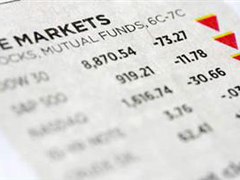
With the shifts in the economy, investors are continually searching for avenues to increase their portfolio presence. Another main concern is investing with the least overall expense. No load funds have been a bright spot in the investment world, offering little or no initial investment cost, while giving a good return on investment (ROI). If you are just doing research, you will want to know what are no load funds.
When you are looking into the investment world, you have a number of choices. You can work through a professional investment company, attempt the investments yourself (known as ‘day-trading’) or go through a secondary party, known as a broker. Working with other professionals will often require a fee. This fee is to compensate the professional for their in-depth knowledge and experience in helping you select the most secure and best investments. No load mutual funds offer the investor an opportunity to work directly through an investment company and forgo the commission charge.
The benefit of the no load fund is not only the up front commission savings, but you have an additional savings if you opt to sell the fund. Typically, in load funds, there is a commission at the initial purchase as well as the sale point. These charges are known as front-end and back-end (or redemption) fees. In some cases, a load mutual fund may be directed as a level-load. This will add an additional percentage charge annually, until the final sale.
An overall analogy indicates that load funds do not always perform better than no load funds. With the above in consideration, one would think that the investment decision is a no-brainer. This is not necessarily so. As with anything in life, there are good and poor load and no load investments. There are no load funds of particular excellence, with high rankings that can perform better than load funds. This works in the reverse as well.
So is there a down side? Since nothing is really free in this life, you must do your homework when looking into no load funds. There may not be front end or back end fees, but, there might be maintenance or custodial fees. These are charges that are levied a percentage of the investment on an annual basis. In some cases, if you do the math, these fees are actually higher than what would be charged in a load mutual fund. The dollars may sound good, initially, but if you extrapolate the charges, the maintenance fees will be costlier in a very short span of time.
The best rule of thumb is to do some in-depth research. Fund the no load funds that are ranked the highest. Make sure that these mutual funds offer longevity. Just because they have outperformed in one year, doesn’t mean it was always this way. They must show excellence over a minimum of three years. Even if it is a gradual increase in value, the no load fund will demonstrate profitability.
For more information, go to:
http://www.investopedia.com/terms/n/no-loadfund.asp#axzz1Yrqb0K4s
http://finance.yahoo.com/funds/how_to_choose/article/100601/Load_vs__No-Load_Funds
